
Revista Espanola de Medicina Nuclear e Imagen Molecular
Scope & Guideline
Bridging Theory and Practice in Radiology Innovations
Introduction
Aims and Scopes
- Nuclear Medicine Applications:
The journal addresses the use of nuclear medicine techniques, including PET/CT, SPECT, and radiopharmaceutical therapies, in the diagnosis, treatment, and management of diseases, particularly various forms of cancer. - Molecular Imaging Techniques:
Research published in the journal often explores advanced molecular imaging methods, emphasizing their role in enhancing diagnosis and treatment planning through detailed visualization of biological processes. - Theranostics:
A key area of focus is the integration of diagnostics and therapeutics, where the journal showcases studies that highlight the use of targeted radiopharmaceuticals for personalized treatment approaches. - Radiomics and Machine Learning:
The journal includes innovative research on radiomics and machine learning applications in nuclear medicine, aiming to improve diagnostic accuracy and treatment outcomes through advanced image analysis. - Multidisciplinary Approaches:
The journal promotes collaborative studies and multidisciplinary approaches in nuclear medicine, highlighting the importance of integrating various medical specialties for enhanced patient care.
Trending and Emerging
- Artificial Intelligence and Imaging:
There is a growing emphasis on the application of artificial intelligence and machine learning techniques in nuclear medicine, particularly regarding image interpretation and predictive analytics. - Integration of Immunotherapy and Imaging:
Research exploring the intersection of immunotherapy and nuclear imaging is on the rise, focusing on how imaging can inform treatment responses and patient selection for immunotherapeutic interventions. - Personalized Medicine and Precision Approaches:
The trend toward personalized medicine is evident, with increasing publications on how molecular imaging can guide tailored treatment strategies based on individual patient profiles. - Cardiovascular Applications of Nuclear Medicine:
A notable increase in studies focusing on cardiovascular applications of nuclear medicine, particularly in imaging and treatment of cardiac conditions, is emerging as a significant trend. - Health Technology Assessment and Policy Research:
Emerging themes also include health technology assessments related to nuclear medicine practices, addressing the economic and policy implications of advanced imaging technologies.
Declining or Waning
- Basic Research in Radiopharmaceutical Development:
There has been a noticeable decrease in papers focusing solely on the basic science of radiopharmaceutical development, possibly due to a shift toward clinical applications and outcomes. - Traditional Imaging Techniques:
Traditional imaging methods, such as standard X-rays and conventional CT scans, appear to be receiving less attention in favor of more advanced imaging techniques like PET/CT and SPECT. - Niche and Rare Disease Studies:
Research centered on very niche or rare diseases is becoming less common, as the focus shifts toward more prevalent conditions that align with broader clinical applications and interests.
Similar Journals
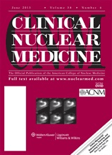
CLINICAL NUCLEAR MEDICINE
Transforming Insights into Impactful PracticesCLINICAL NUCLEAR MEDICINE is a premier journal dedicated to the field of nuclear medicine, published by Lippincott Williams & Wilkins. With a history of excellence since its inception in 1978, the journal serves as a vital resource for researchers, healthcare professionals, and students seeking to deepen their understanding of this rapidly evolving discipline. The journal holds a commendable Q2 ranking in both Medicine (miscellaneous) and Radiology, Nuclear Medicine and Imaging, reflecting its significant impact on advancing clinical practices and research. While currently not offered as an open-access publication, CLINICAL NUCLEAR MEDICINE ensures rigorous peer review and high-quality publications, contributing to the broad dissemination of cutting-edge studies and reviews. With its comprehensive scope encompassing both diagnostic and therapeutic nuclear medicine applications, researchers around the globe turn to this journal to stay informed and inspire innovations in patient care for the years leading up to 2024 and beyond.
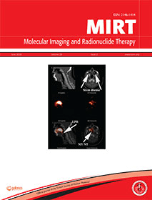
Molecular Imaging and Radionuclide Therapy
Elevating the standards of molecular imaging research.Molecular Imaging and Radionuclide Therapy is an esteemed academic journal published by GALENOS PUBL HOUSE, dedicated to advancing the fields of radiology, nuclear medicine, and imaging. Since its inception, this Open Access journal has facilitated the dissemination of high-quality research and innovative practices in molecular imaging and radionuclide therapy, making it a vital resource for researchers, professionals, and students alike. With an ISSN of 2146-1414 and an E-ISSN of 2147-1959, the journal has established its presence globally while specifically catering to the Turkish academic and medical community. As of 2023, it is ranked #241/333 in the Radiology, Nuclear Medicine and Imaging category on Scopus, holding a respectable Q3 quartile ranking. The journal serves as a platform for sharing impactful findings from 2017 to 2024, reinforcing its commitment to open access since 2011. With a dedication to enhancing the knowledge base in molecular imaging and therapy, it remains an important conduit for scholarly communication and collaborative research developments in this dynamic field.
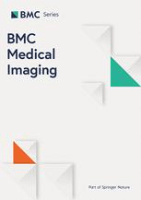
BMC MEDICAL IMAGING
Elevating Standards in Diagnostic Imaging Through Open Knowledge.BMC Medical Imaging is a premier open-access journal dedicated to advancing the field of radiology, nuclear medicine, and imaging technologies. Published by BMC in the United Kingdom, this journal serves as a vital resource for researchers, clinicians, and students, fostering a collaborative environment for sharing innovative findings and methodologies in medical imaging. With a commendable impact factor and an impressive Scopus ranking within the top 35% of its category, BMC Medical Imaging provides a platform for high-quality research to be disseminated widely and freely since its inception in 2001. The journal aims to cover a diverse array of topics, from advanced imaging techniques to their clinical applications, enhancing the understanding and effectiveness of diagnostic practices. By contributing to the body of knowledge and facilitating open access to research, BMC Medical Imaging plays a pivotal role in shaping the future of medical imaging and improving patient care.

American Journal of Nuclear Medicine and Molecular Imaging
Pioneering Research in Molecular Imaging and RadiopharmaceuticalsThe American Journal of Nuclear Medicine and Molecular Imaging (ISSN: 2160-8407), published by E-CENTURY PUBLISHING CORP, is a distinguished platform for the dissemination of cutting-edge research in the fields of nuclear medicine and molecular imaging. With a commitment to advancing scientific inquiry and clinical applications, this journal serves as a vital resource for researchers, clinicians, and students dedicated to exploring innovative imaging modalities, radiopharmaceuticals, and their applications in diagnosing and treating various medical conditions. Although currently not available as an open-access journal, this publication plays a crucial role in fostering academic dialogue and collaboration within the medical community. Its diverse range of topics and expert contributions underscore its impact in bridging the gap between research findings and clinical practice, making it an essential read for anyone interested in the rapidly evolving landscape of nuclear medicine and imaging technologies.

INVESTIGATIVE RADIOLOGY
Unveiling the Future of Nuclear MedicineINVESTIGATIVE RADIOLOGY, published by Lippincott Williams & Wilkins, is a premier peer-reviewed journal dedicated to disseminating innovative research in the fields of radiology, nuclear medicine, and imaging. With a notable impact factor underscored by its impressive ranking—10th out of 333 in its category, positioning it within the 97th percentile—this journal serves as a vital resource for researchers, professionals, and students eager to stay at the forefront of advancements from 1966 to 2024. Although it does not offer open access, the high-quality studies and reviews found within its pages contribute significantly to the understanding and application of modern imaging techniques. Recognized for its Q1 status in both miscellaneous medicine and radiology specializations, INVESTIGATIVE RADIOLOGY continues to play an essential role in shaping the future of diagnostic and therapeutic imaging.

Journal of the Belgian Society of Radiology
Bridging Gaps in Radiology with Unrestricted AccessThe Journal of the Belgian Society of Radiology, published by UBIQUITY PRESS LTD, is a pivotal resource in the field of radiology, nuclear medicine, and imaging. With an ISSN of 2514-8281 and E-ISSN of 2514-8281, this open access journal has been dedicated to fostering the dissemination of high-quality research since its establishment in 2010. Distributed from the United Kingdom, it offers a platform for innovative studies, case reports, and reviews that contribute to the advancement of radiological sciences. Despite its current Q4 category ranking within Scopus, the journal plays a critical role in sharing essential findings with a community of over 1,200 professionals and students eager to stay abreast of emerging trends and technological advancements in imaging. By enabling unrestricted access to its publications, the journal encourages collaborative research and knowledge exchange that transcends geographic boundaries, solidifying its importance for both established researchers and emerging scholars in the discipline.
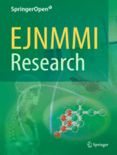
EJNMMI Research
Elevating Standards in Radiology and Nuclear Medicine.EJNMMI Research, a prominent journal published by Springer, plays a pivotal role in advancing the fields of radiology, nuclear medicine, and imaging. With an impact factor that reflects its strong standing—ranking in the top 22% of its category (Q1 as of 2023)—this open-access journal offers researchers, professionals, and students unparalleled access to innovative research and developments in the field since its inception in 2011. Based in Germany, EJNMMI Research fosters global collaboration by ensuring that cutting-edge findings are freely accessible, thereby accelerating scientific discovery and application. With an emphasis on high-quality, peer-reviewed articles, it serves as an essential resource for those seeking to stay at the forefront of nuclear medicine and imaging. By bridging theoretical insights with practical applications, the journal not only influences academic discourse but also supports ongoing advancements in clinical practices.
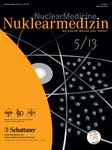
NUKLEARMEDIZIN-NUCLEAR MEDICINE
Empowering Professionals with Cutting-edge Nuclear Medicine Knowledge.NUKLEARMEDIZIN-NUCLEAR MEDICINE is a prestigious journal published by Georg Thieme Verlag KG, focusing on pivotal advancements in the fields of Nuclear Medicine, Radiology, and Imaging. Established in 1959, this journal has served as a critical platform for disseminating innovative research, reviews, and clinical guidelines until its anticipated convergence in 2024. With an ISSN of 0029-5566 and an E-ISSN of 2567-6407, NUKLEARMEDIZIN is acknowledged in the academic community as a Q3 category journal within Medicine (miscellaneous) and Radiology, Nuclear Medicine, and Imaging as of 2023, highlighting its ongoing contribution to the interdisciplinary dialogue in healthcare. Although the journal does not currently offer open access, it remains accessible to professionals and students through various academic databases, ensuring that cutting-edge knowledge in this growing field is shared widely. Researchers interested in the latest methods and technologies in Nuclear Medicine will find NUKLEARMEDIZIN a valuable resource for enhancing their work and understanding the complexities of modern imaging modalities.

Current Radiology Reports
Navigating the evolving landscape of imaging technology.Current Radiology Reports is an esteemed journal published by SPRINGERNATURE, focusing on the dynamic field of radiology, nuclear medicine, and imaging. With a commitment to advancing knowledge and promoting innovative practices, this journal serves as a valuable resource for researchers, healthcare professionals, and students striving to stay at the forefront of radiological advancements. Featuring an impressive impact factor and recognized as a Q3 journal within its category as of 2023, it highlights critical developments and comprehensive reviews that inform clinical practice and research methodologies. Although it operates under a subscription model, the journal provides a rich repository of peer-reviewed content, covering a wide range of topics from diagnostic imaging to therapeutic applications. With a publication span from 2013 to 2024, Current Radiology Reports continues to uphold its reputation as a leading publication critical for anyone involved in the radiology profession.

Egyptian Journal of Radiology and Nuclear Medicine
Advancing the Frontiers of Radiology and Nuclear MedicineThe Egyptian Journal of Radiology and Nuclear Medicine, published by Springer, is a premier open access journal that has provided valuable insights and advancements in the fields of radiology and nuclear medicine since its initiation in 2010. With an E-ISSN of 2090-4762, this journal is dedicated to bridging the gap between research and clinical practice, allowing for the dissemination of high-quality research to a global audience. Situated in Germany, it enjoys a robust reputation in the academic community, evidenced by its categorization in the Q3 quartile for 2023, as well as its Scopus ranking, where it holds a position of #225 out of 333 in the domain of Radiology, Nuclear Medicine and Imaging, placing it in the 32nd percentile. The journal's open access model ensures that researchers, professionals, and students can freely access innovative studies, reviews, and case reports that discuss the latest methodologies, technological advancements, and clinical outcomes in radiology and nuclear medicine. As it looks toward its converged years spanning from 2010 to 2024, the Egyptian Journal of Radiology and Nuclear Medicine continues to be an essential resource for advancing knowledge and fostering ongoing collaboration in these critical fields.